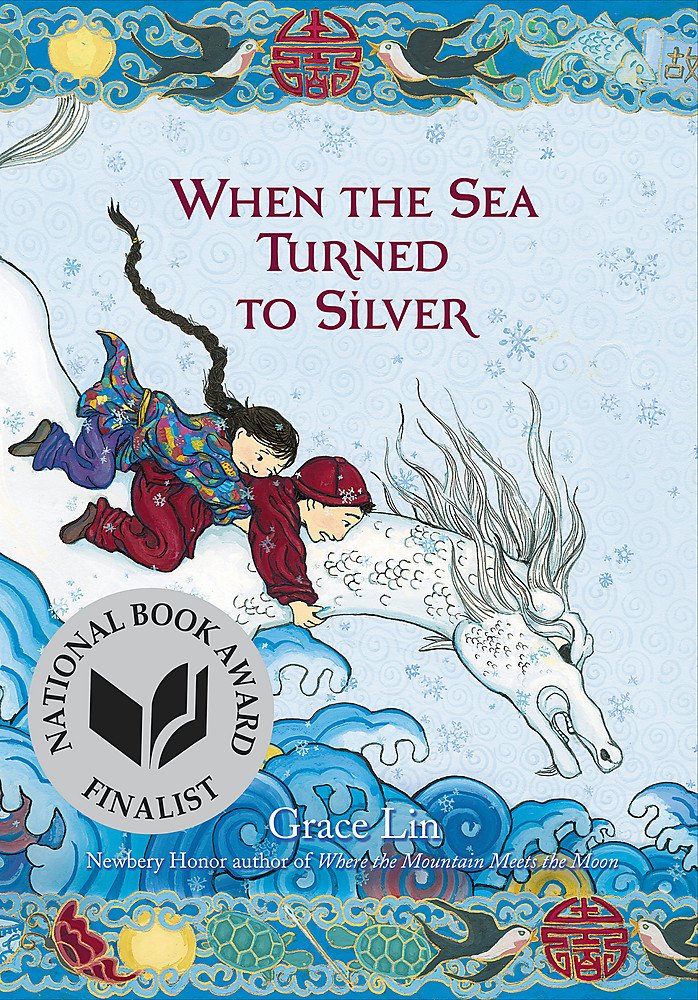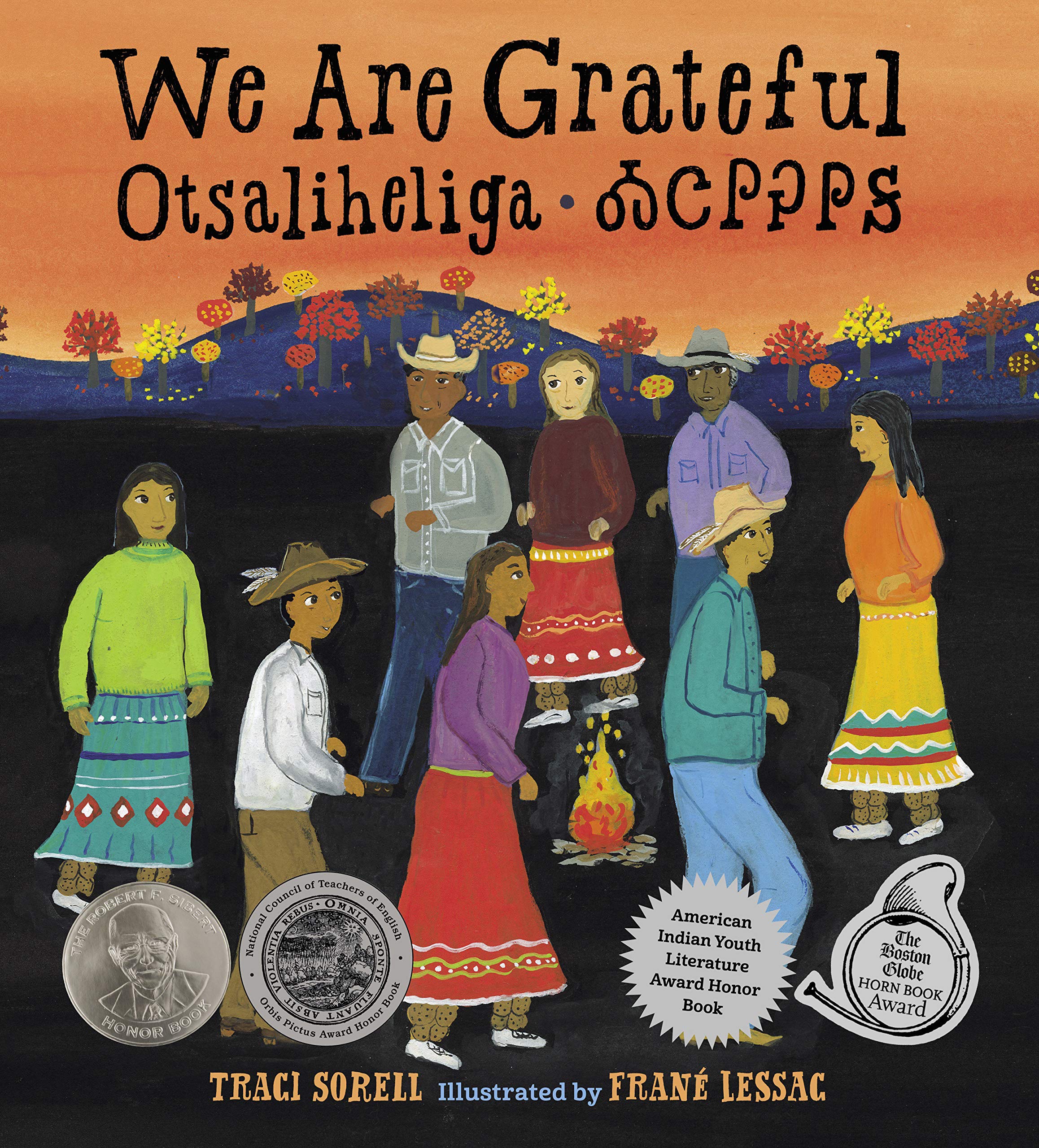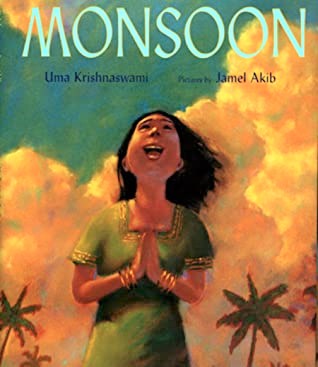There are many places where you can find recommendations of diverse books across multiple cultures, experiences, perspectives, and identities.
There are also some strategies you can use to learn more about the books you are reviewing and ensure authenticity for the books you choose. Here are some ideas to help your search.
Finding Diverse Books
Where can I begin to find books?

Image: When the Sea Turned to Silver by Grace Lin
A few good places to look for diverse books are book awards lists, curated lists from trusted sources, and social media conversations about diverse books. Author Paula Yoo provides a helpful reminder to not limit yourself to award lists, however, because there will be many excellent books each year that didn't receive awards.
Expanding your book collection for classroom and school libraries will take time. There are always new books coming out, so once you identify some sources you find helpful, check back every once in awhile to learn about what's new.
We Need Diverse Books: Recommended Resources
One helpful place to start is the resource list from We Need Diverse Books (WNDB), Where to Find Diverse Books. Resources and booklists represent a wide range of communities, including: African, African American, American Indian/Alaska Native, Asian American, Disabilities, Muslim, Jewish, LGBTQIA, Latinx, and South Asian.
In addition, WNDB has published multiple anthologies for children and young adults featuring diverse authors.
Awards: Latinx / Latin American / Caribbean Experience
- Pura Belpré Book Award: Books that best portray, affirm, and celebrate the Latino cultural experience in an outstanding work of literature for children and youth
- Américas Award: Children’s and young adult books that portray Latin America, the Caribbean, or Latinx in the United States
- Tomas Rivera Book Award: Books highlighting Mexican American characters and experiences
Awards highlighting diversity
- Asian Pacific American Libraries Association Awards
- Coretta Scott King Book Awards
- American Indian Youth Literature Award
- Stonewall Book Awards (LGBTQ)
- Schneider Family Book Award (Disability experience)
- The Walter Dean Myers Award for Outstanding Children's Literature ("The Walter")
- Ezra Jack Keats Award
Colorín Colorado Booklists
- Books for Young Children
- Books for Kids
- Books for Young Adults
- American Indian/Alaska Native Heritage
- Hispanic Heritage
- Asian Pacific American Heritage
Other recommended sources
- 8 Steps to Creating a Diverse Book Collection (Lee and Low Publishers)
- AdLit.org: Diverse Books Project (middle and high school)
- We Need Diverse Books: Our Story App
- Diverse Book Finder
- Kids Like Us: High-quality urban literature
- Read Across America: Diverse books for the whole year (Prior Years)
- Best Books for Young Readers curated by Dr. Ebony Elizabeth Thomas
- Banks Street College of Education Best Children’s Books of the Year
- Social Justice Books: Booklists for Schools
- Disrupt Texts
- Latinxs in Kid Lit
- Las Musas
- I'm Your Neighbor: Children's Books and Reading Projects Building Bridges Between "New Arrivals" and "Long-Term Communities"
You can also browse titles from publishers that specialize in diverse children’s literature, such as:
- Lee and Low, which includes the Shen's Books imprint and is in the process of acquiring Cinco Puntos Press (@LEEandLOW)
- Heartdrum, a Native imprint from HarperCollins
You can find more publishers in Small Presses Owned by Black, Indigenous, and People of Color.
Social media can also be a helpful resource in finding diverse texts for your classroom. You can follow authors, illustrators, publishing companies, educators, and others in the field, such as We Need Diverse Books (@diversebooks).
News and updates
- New Documentary Chronicles Diversity in Children’s Literature (School Library Journal)
- Children’s Book Awards that Celebrate Diversity (School Library Journal)
- Achieving Meaningful Diversity in School Library Collections (Education Week)
What Is a Book's Story?

Image: We are Grateful: Otsaliheliga by Traci Sorell (Cherokee) and Frané Lessac
In addition to finding helpful sources, it is important to figure out some strategies on how to evaluate books you come across and how to identify other options you may wish to include in your classroom.
One important step is to learn about the books you would like to use and the creators' relationship to the topic. Are the authors and illustrators from the communities they are depicting? If not, have they worked in close collaboration with those communities to ensure authenticity? What is their connection to the work and topic of the book? Information about how the book has been created and how it has been reviewed is often available in the backmatter about the book or in featured resources related to the book.
For example, the following videos showcase ways in which two creators, Juana Martinez-Neal and Joseph Bruchac, worked to ensure authenticity about topics they were representing from experiences other than their own.
A third example can be found in the collaboration between Traci Sorell (Cherokee) and Frané Lessac on their award-winning book, We Are Grateful: Otsaliheliga. As part of their work on the book, Traci and Frané traveled to the Cherokee Nation in Oklahoma so that Frané, who is not Native, could immerse herself in the community, eat some favorite dishes, and learn more about the traditions they would be sharing in the book.
Juana Martinez-Neal: Illustrating Fry Bread
Juana Martinez-Neal describes the respect her family instilled in her for the Indigenous communities of her native Peru and the influence that perspective had on her illustrations for the award-winning book "Fry Bread: A Native American Family Story" by Kevin Noble Maillard.
Joseph Bruchac: Writing Code Talkers
Joseph Bruchac (Abenaki) talks about the opportunity to write Code Talker: A Novel About the Navajo Marines of World War Two and his research process for the book.
Avoiding the Single Story
When it comes to authentic literature, you also want to make sure that you are choosing literature that is not perpetuating stereotypes about certain groups or linguistic practices. In her TED Talk, The Danger of the Single Story, Chimamanda Ngozi Adichie defines single stories as overly simplistic, false perceptions we can form about individuals, groups, or countries.
Author Uma Krishnaswami explains below that one way to avoid the single story is to make sure to include multiple texts throughout your classroom all year long that serve as mirrors and windows for diverse cultures and communities — and not to rely on a single book to represent a culture.
Uma Krishnaswami: Why it's important not to rely on a single book or story about different cultures
Inclusion within diversity
In addition, it's important ask whether diverse groups are represented across the curriculum and in different kinds of conversation about identity. Dr. Ayanna Cooper notes in the video below that Black immigrant stories and voices are often invisible in school settings and conversations about immigration.
For some great book titles that lift up a diverse group of Black voices from around the world and push back against common stereotypes and misperceptions, see the following booklists:
- Afro-Latinx Stories: Latin America and the Caribbean
- Stories from Africa: Books for Children and Young Adults
- Teaching About Haiti: Books for Elementary, Middle, and High School (Social Justice Books)
- Teaching About Africa: Books for Elementary, Middle, and High School (Social Justice Books)

 Learn more about where you can find titles of diverse books and how to evaluate book choices in your instruction. This article is part of our guide to
Learn more about where you can find titles of diverse books and how to evaluate book choices in your instruction. This article is part of our guide to 





Add new comment